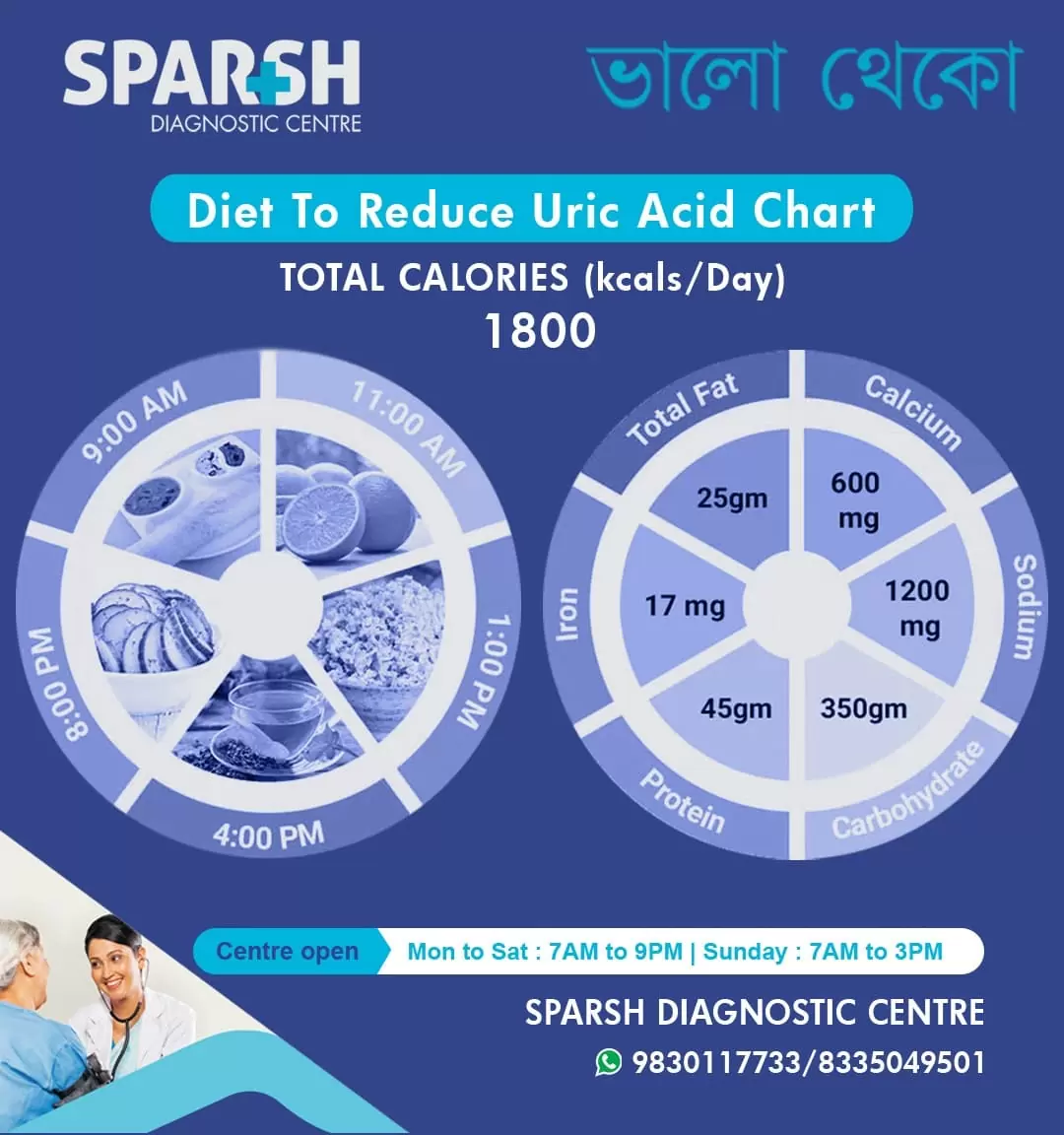Hyperuricemia is a medical condition characterized by elevated levels of uric acid in the blood. While uric acid is a natural waste product formed when the body breaks down purines (substances found in certain foods and body cells), excess levels can lead to painful conditions like gout, kidney stones, and joint inflammation.
This condition is becoming increasingly common due to changes in diet, sedentary lifestyle, and rising cases of obesity, diabetes, and hypertension. Understanding the symptoms, causes, complications, and treatments of hyperuricemia is crucial to prevent long-term health issues.
What is Hyperuricemia?
Hyperuricemia occurs when the blood uric acid levels exceed the normal range:
Men: > 7.0 mg/dL
Women: > 6.0 mg/dL
Normally, uric acid dissolves in the blood and passes through the kidneys into the urine. But when the body produces too much uric acid or the kidneys cannot eliminate it efficiently, it leads to high levels in the blood.
Types of Hyperuricemia
Primary Hyperuricemia – Caused by genetic factors or metabolic disorders where the body naturally produces excess uric acid.
Secondary Hyperuricemia – Caused by lifestyle, diet, medications, or underlying health conditions such as kidney disease or cancer treatment.
Causes of Hyperuricemia
Several factors contribute to high uric acid levels, including:
Dietary Causes
High-purine foods: red meat, organ meats, shellfish
Alcohol, especially beer and spirits
Sugary beverages and foods rich in fructose
Medical Conditions
Medications
Diuretics (used for high blood pressure and heart failure)
Low-dose aspirin
Immunosuppressive drugs
Lifestyle Factors
Symptoms of Hyperuricemia
Hyperuricemia itself may not always cause symptoms, which is why it’s often detected during routine blood tests. However, when it progresses, the following symptoms may appear:
Unbearable joint pain (especially at night)
Swelling and inflammation in the joints
Restricted joint movement
Pain in the big toe (common in gout)
Kidney-related symptoms such as pain in the lower abdomen due to kidney stones
Fatigue and malaise in chronic cases

If left untreated, hyperuricemia can progress into gout, kidney disease, and cardiovascular complications.
Complications of Hyperuricemia
Gout
A form of arthritis where urate crystals accumulate in joints, causing intense pain, redness, and swelling.Kidney Stones
Excess uric acid can crystallize in the kidneys, leading to painful stones.Tophi Formation
Deposits of uric acid crystals under the skin around joints.Chronic Kidney Disease
Persistent high uric acid can damage kidney function.Heart Disease & Metabolic Syndrome
Studies link high uric acid with increased risk of hypertension, diabetes, and cardiovascular problems.
Diagnosis of Hyperuricemia
1. Blood Test
Serum uric acid level measurement.
2. Urine Test
24-hour urine uric acid excretion test to check if the body produces too much uric acid or if the kidneys are not excreting enough.
3. Imaging Tests
X-rays and ultrasound to detect joint damage or urate crystals.
CT scan for kidney stones.
Treatment of Hyperuricemia
The management of hyperuricemia depends on the underlying cause and severity.
1. Lifestyle Modifications
Limit alcohol and sugary drinks.
Maintain a healthy body weight.
2. Medications
Urate-lowering drugs: Allopurinol, Febuxostat
Uricosuric agents: Probenecid (helps kidneys remove uric acid)
NSAIDs (non-steroidal anti-inflammatory drugs) for pain relief during gout attacks
Colchicine for reducing inflammation
3. Diet Management
Include:
Low-fat dairy products
Whole grains
Fresh fruits and vegetables
Coffee (in moderation) – studies show it may lower uric acid
Vitamin C supplements (help reduce uric acid levels)
Preventing Hyperuricemia
Routine health check-ups for serum uric acid levels
Balanced diet with low purine foods
Hydration to flush out uric acid
Weight management to reduce risk of gout and kidney stones
Avoid crash diets or high-protein diets which may worsen uric acid levels
Hyperuricemia and Diet Plan (Sample)
| Meal Time | Recommended Foods | Avoid Foods |
|---|---|---|
| Breakfast | Oats with low-fat milk, fresh fruits | Bacon, sausages |
| Mid-Morning | Coconut water, nuts (almonds, walnuts) | Sugary drinks |
| Lunch | Brown rice, dal, leafy vegetables, salad | Red meat, shellfish |
| Evening Snack | Green tea, whole-grain crackers | Alcohol, fried snacks |
| Dinner | Grilled vegetables, fish (occasionally), soup | Organ meats, rich gravies |
| Before Bed | Warm milk or chamomile tea | Sweets, desserts |

To get yourself tested for Uric Acid levels from the comforts of your own homes, call Sparsh Diagnostic Centre’s helpline number 9830117733.
#BhaloTheko
Disclaimer:
No content on this site, regardless of date, should ever be used as a substitute for direct medical advice from your doctor or other qualified clinician.
![]()






[…] Before diving into the specifics of a low-purine diet, it’s essential to understand the root cause of gout: uric acid. Uric acid is a byproduct of purine metabolism. Purines are natural compounds found in certain foods and in your body’s cells. When the body breaks down purines, uric acid is formed. Normally, uric acid is dissolved in the blood and excreted through the kidneys in urine. However, when too much uric acid is produced or the kidneys are unable to eliminate it effectively, it accumulates in the bloodstream, leading to hyperuricemia. […]
[…] this initial stage, individuals have elevated levels of uric acid in their blood (hyperuricemia), but they do not experience any noticeable symptoms of gout. At this point, there is an increased […]
[…] in the urine, which can contribute to stone formation. 4) Obesity: Excess body weight can lead to high levels of uric acid in the urine, which increases the risk of stone formation. 5) Family history: A genetic […]